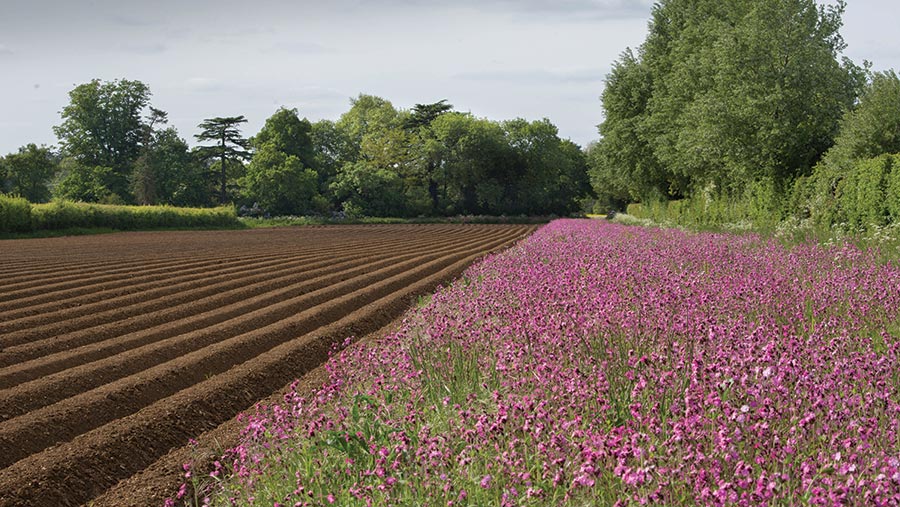How to benefit financially from your farm’s natural capital
 © Tim Scrivener
© Tim Scrivener Farmers can be paid for creating environmental benefits or maintaining natural resources that provide value to wider society.
Speaking during a webinar for the inaugural Cereals LIVE event, Savills head of rural research Emily Norton explained the concept of natural capital accounting.
By identifying and evaluating the amount of natural assets (such as clean water, carbon-capturing plants and healthy soils) on a holding, the farmer can include this capital within a business model.
See also: Natural capital: What it is and how to value it on your farm
Within the UK, the biggest market for this is in the corporate sector, where companies will pay a landowner for green credentials that will improve their image, such as carbon offsetting.
By layering payments over single areas and building profitable environmental contracts, the investment in the environmental condition of land could increase from £250bn (current stewardship schemes and limited private contracts) to £950bn, according to research by Savills.
How do you start?
- First create a natural capital asset register to record the elements on farm.
- Do a baseline assessment. Categories to consider include land use, renewables, livestock, environmental schemes, water and community impact.
- This will clarify where to invest, where resources already are, and where there are opportunities.
- In time, it will be possible to calculate total returns based on all capitals, including social and natural capital.
Ms Norton said: “There is money that wants to be invested in natural capital. Farmers should not be expected to deliver environmental services and benefits cheaply based on previous agricultural payment structures such as income forgone.
“To prevent corporate teams buying land and pricing farmers out of the market, land used needs to be layered, with food production taking place alongside environmental benefits, and the pricing strategy must be correct.”
Future policy must respect those who maintain natural capital, such as tenants, rather than only those who own it or have created it, she said.
Matchmaking
The market for natural capital is at a relatively early stage of development. One way to match buyers and sellers of natural capital is to use a platform such as EnTrade, an online environmental marketplace and subsidiary of Wessex Water.
Guy Thompson, managing director of EnTrade, said a recent scheme had seen farmers receive £100/ha in return for cover cropping to reduce the nitrate risk to water.
“Covid-19 highlighted the risks to the food supply chain, so now feels like an important time to consider diversifying into environmental markets,” he said.
“For farmers, land and water should be a business opportunity and could become the cornerstone of your income.
“Public funding for public goods is an exciting idea, but private sector buyers are also emerging.”
Case study: Beeswax Dyson Farming
Ben Wills, head of property at Beeswax Dyson Farming, said he had used an online sustainable agriculture calculator – the Cool Farm Tool – to establish the 14,000ha estate’s carbon dioxide emissions.
This helped find the baseline, as a first step before moving on to natural capital accounting by using further technology to map the farmland and identify its emissions and sequestration.
This included 11,713 trees, 390km of hedgerows, 17km of permissive footpaths, 250km of watercourses, and 7km of restored stone walling.
Mr Wills determined that 60% of carbon emissions were from inorganic nitrogen and 39% from fuel consumption, while the most carbon sequestration came from woodland management (41%), environmental stewardship (34%), and trees and hedgerows (14%).
“Stewardship works well for a while, but can then turn into carbon flux, so we can’t just stand still; we need a long-term plan,” said Mr Wills.
“For the next steps in our carbon journey, we plan to reduce our diesel consumption through biomethane production, reduce our inorganic nitrogen fertiliser by fortifying liquid digestate, and increase the amount of land in stewardship schemes.”
